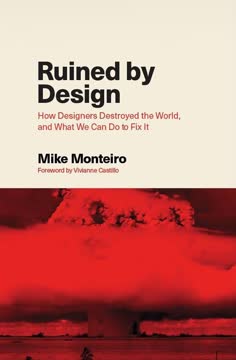Key Takeaways
1. Designers Must Embrace Ethical Responsibility
You are responsible for what you put into the world. And you are responsible for the effects those things have upon the world.
Ethical foundation. Designers, like doctors with the Hippocratic Oath, must adopt a code of ethics to guide their work. This code should prioritize the well-being of users and society over profit or personal gain. The current lack of ethical guidelines in the design field has contributed to the creation of harmful technologies and practices.
Consequences of inaction. The internet is rife with examples of unethical design decisions, from Facebook's ad targeting based on race to Twitter's failure to address abuse. These decisions have real-world consequences, contributing to harassment, discrimination, and even violence. Designers must recognize the power they wield and the potential for harm their work can cause.
A call to action. Designers must move beyond simply following orders and instead act as ethical gatekeepers, questioning the purpose and impact of their work. This requires courage, critical thinking, and a willingness to stand up to unethical demands. The future of technology, and indeed society, depends on designers embracing their ethical responsibility.
2. The Tech Industry's Harmful Design Patterns
The world isn’t broken. It’s working exactly as it was designed to work. And we’re the ones who designed it. Which means we fucked up.
Examples of harm. The tech industry is plagued by design decisions that prioritize engagement and profit over user safety and well-being. Examples include:
- Live-streaming of violence on social media platforms
- Sharing of users' HIV status by dating apps
- Emotional manipulation through newsfeed experiments
- Mapping of military bases through fitness tracking data
Root cause. These harmful outcomes are not accidental; they are the result of deliberate design choices made by individuals and companies that prioritize growth and profit above all else. The "move fast and break things" mentality has led to a disregard for the potential consequences of technology.
Need for accountability. Designers must be held accountable for the harm caused by their work. This requires a shift in mindset, from viewing design as a purely technical exercise to recognizing its ethical and social implications. The industry needs to move beyond superficial fixes and address the underlying systemic issues that enable harmful design patterns.
3. Designers as Gatekeepers: Saying "No" and Asking "Why"
We are gatekeepers. Nothing should be making it through the gate without our labor and our counsel. We are responsible for the effects of our work once it makes it out into the world.
Power and responsibility. Designers are not simply hired hands; they are gatekeepers who control what gets released into the world. This power comes with a responsibility to ensure that technology is used for good and not for harm. Designers must be more than just skilled technicians; they must be ethical advisors who guide their clients and employers towards responsible choices.
The importance of "no" and "why." The words "no" and "why" are essential tools for ethical design. Designers must be able to say "no" to unethical requests and to ask "why" to understand the potential consequences of their work. These questions should be asked at every stage of the design process, from initial concept to final implementation.
Defense against monsters. By embracing their role as gatekeepers, designers can become the last line of defense against harmful technologies and practices. This requires courage, conviction, and a willingness to stand up to unethical demands, even if it means risking their jobs. The future of technology depends on designers embracing their power and using it to protect society.
4. The Corrosive Influence of Ayn Rand and Silicon Valley's "I Got Mine" Mentality
Ayn Rand filling out Social Security paperwork.
Objectivism's dark side. The philosophy of Ayn Rand, with its emphasis on individual achievement and disregard for the common good, has had a corrosive influence on Silicon Valley culture. This "I got mine, fuck you" mentality has led to a prioritization of profit over ethics and a disregard for the well-being of others.
Uber's example. Uber's rise exemplifies the dangers of this mindset. The company's relentless pursuit of growth led to unethical practices such as surge pricing during disasters, exploitation of drivers, and the creation of tools like Greyball to deceive regulators. These actions demonstrate a disregard for the well-being of drivers, riders, and the public.
Need for a new ethical framework. Designers must reject the "I got mine" mentality and embrace a more ethical framework that prioritizes the common good. This requires a shift in values, from individual achievement to collective responsibility, and a recognition that the success of one should not come at the expense of others. The industry needs to move beyond Randian objectivism and embrace a more humanistic approach to technology.
5. Design Education Needs a Moral and Ethical Overhaul
We need to fear the consequences of our work more than we love the cleverness of our ideas.
Current shortcomings. Design education often fails to adequately prepare students for the ethical challenges they will face in the real world. Many programs prioritize aesthetics and technical skills over critical thinking and ethical reasoning. This leaves graduates ill-equipped to navigate the complex moral dilemmas that arise in the tech industry.
Need for ethical training. Design schools must incorporate ethics into their curriculum, teaching students to consider the social and environmental impact of their work. This includes exploring topics such as:
- Privacy
- Accessibility
- Bias
- Sustainability
Beyond "soft skills." Professional practices, often relegated to "soft skills" training, must be integrated into the core curriculum. Students need to learn how to communicate effectively, negotiate ethically, and advocate for responsible design. Design education needs to move beyond aesthetics and embrace a more holistic approach that prepares students to be ethical and effective practitioners.
6. Diversity and Inclusion are Not Optional, They are Essential
All the white boys in the room, even with the best of intentions, will only ever know what it’s like to make decisions as a white boy.
Homogeneity's limitations. The lack of diversity in the tech industry has led to the creation of products and services that fail to meet the needs of a wide range of users. When teams are composed of individuals with similar backgrounds and experiences, they are more likely to overlook potential biases and unintended consequences. This can result in products that are discriminatory, inaccessible, or even harmful to certain groups.
Benefits of diversity. Diverse teams are better equipped to identify potential problems and develop innovative solutions. By including individuals with different perspectives, backgrounds, and experiences, teams can create products that are more inclusive, equitable, and effective. Diversity is not just a matter of fairness; it is essential for good design.
Taking action. Companies must actively work to create more diverse and inclusive workplaces. This includes:
- Recruiting from a wider range of sources
- Providing mentorship and support for underrepresented groups
- Creating a culture of respect and inclusion
7. The Power of Collective Action and Community
Once you raise your voice, you will be amazed how loud it is.
Individual limitations. It can be difficult, if not impossible, to effect change as an individual. Standing up to unethical demands can be risky, especially in a culture that prioritizes profit over ethics. However, by banding together, designers can amplify their voices and create a powerful force for change.
Strength in numbers. Collective action provides strength in numbers, making it more difficult for companies to ignore ethical concerns. When employees organize and demand change, they are more likely to be heard and to achieve their goals. The Google walkout is a powerful example of the impact collective action can have.
Building a supportive community. Designers need to create communities where they can share their experiences, offer support, and hold each other accountable. These communities can provide a safe space for designers to discuss ethical dilemmas, develop strategies for action, and build the courage to stand up for what is right. By working together, designers can create a more ethical and responsible tech industry.
8. Professional Organizations: A Foundation for Ethical Design
Crime is more organized than design.
Need for structure. The design field lacks a strong professional organization to set standards, resolve disputes, and provide legal representation. This absence leaves designers vulnerable to exploitation and makes it difficult to hold unethical actors accountable. A professional organization can provide the structure and support needed to create a more ethical and responsible design industry.
Key functions. A well-run professional organization can:
- Establish a code of ethics
- Provide legal representation for members facing ethical challenges
- Offer group benefits such as health insurance and retirement plans
- Advocate for responsible design practices
Collective empowerment. By joining together in a professional organization, designers can amplify their voices and create a powerful force for change. This collective empowerment can help to create a more ethical and responsible design industry. The time for individual action is over; it is time for designers to organize and take control of their profession.
9. Licensing and Regulation: Holding Designers Accountable
We can go to jail for this shit now!
Accountability is key. The lack of accountability in the design field has allowed unethical practices to flourish. Licensing and regulation can provide a mechanism for holding designers accountable for their actions and ensuring that they adhere to ethical standards. This can help to protect users and society from the harm caused by irresponsible design.
Precedent in other professions. Many professions, such as medicine and law, require licensing to ensure competence and ethical conduct. These requirements protect the public from unqualified or unethical practitioners. The design field should follow suit, establishing a system for verifying competence and enforcing ethical standards.
Preparing for the inevitable. Whether designers like it or not, licensing and regulation are likely coming to the field. It is better for designers to take the lead in shaping these regulations than to have them imposed from the outside. By proactively engaging in the discussion, designers can ensure that licensing and regulation are implemented in a way that is both effective and fair.
10. Persuasion, Not Pixels: Influencing Ethical Decisions
We need to fear the consequences of our work more than we love the cleverness of our ideas.
Beyond aesthetics. Designers often focus on the visual aspects of their work, neglecting the ethical and social implications. To be truly effective, designers must move beyond pixel-pushing and learn to persuade others to make ethical choices. This requires strong communication skills, critical thinking, and a willingness to challenge the status quo.
The power of argument. Designers must be able to articulate the ethical implications of their work and to make a compelling case for responsible design. This includes:
- Understanding the potential consequences of their decisions
- Building a strong ethical framework
- Communicating effectively with stakeholders
Humility is expensive. Designers must be confident in their expertise and willing to advocate for their values. This requires a shift in mindset, from seeking approval to taking responsibility for the ethical impact of their work. The future of technology depends on designers embracing their power and using it to influence ethical decisions.
11. Knowing When to Throw Your Body on the Gears
There’s a time when the operation of the machine becomes so odious, makes you so sick at heart, that you can’t take part!
Ethical red lines. Every designer must identify their ethical red lines – the issues they are unwilling to compromise on. This requires careful self-reflection and a clear understanding of one's values. When those lines are crossed, it is time to take action.
Walking away. Sometimes, the only ethical option is to walk away from a project or a company. This can be a difficult decision, but it is essential to protect one's integrity and to avoid complicity in unethical practices. Walking away sends a powerful message and can inspire others to do the same.
Sabotage as a last resort. In extreme cases, when all other options have been exhausted, sabotage may be an ethical option. However, this should only be considered as a last resort, when the harm caused by the technology outweighs the potential consequences of sabotage. The decision to throw one's body on the gears is a difficult one, but it is sometimes necessary to stop an odious machine from operating.
Last updated:
FAQ
What’s Ruined by Design by Mike Monteiro about?
- Design’s societal impact: The book examines how designers have contributed to societal harm through unethical design choices, especially in technology and digital products.
- Design as a political act: Monteiro argues that design is never neutral and always has real-world consequences, making designers responsible for their work’s impact.
- Call for ethical action: The book urges designers to act as gatekeepers, challenge harmful practices, and advocate for ethical standards in their profession.
- Critique of industry culture: It critiques Silicon Valley’s prioritization of growth and profit over safety, ethics, and social well-being.
Why should I read Ruined by Design by Mike Monteiro?
- Urgency and relevance: The book addresses the pressing ethical crisis in technology and design, making it highly relevant for anyone involved in creating digital products.
- Empowerment and guidance: Monteiro provides practical advice for designers to navigate ethical dilemmas, persuade stakeholders, and build professional communities.
- Inclusive audience: It’s valuable for UX designers, product managers, and anyone influencing design, challenging readers to take responsibility for their work.
- Real-world examples: The book uses concrete cases from companies like Facebook and Twitter to illustrate its points.
What are the key takeaways from Ruined by Design by Mike Monteiro?
- Designers are gatekeepers: Designers have the power and responsibility to prevent harmful products from reaching the public.
- Ethics over aesthetics: The book emphasizes that ethical considerations must come before visual or functional design choices.
- Need for accountability: Monteiro calls for professional codes of ethics, licensing, and collective action to hold designers accountable.
- Diversity and inclusion: Diverse teams create better, more ethical products and help avoid blind spots that harm marginalized groups.
How does Mike Monteiro define the ethical responsibilities of designers in Ruined by Design?
- Humanity first: Designers are first and foremost human beings, bound by a social contract to leave the world better than they found it.
- Responsibility for impact: Designers must consider both intended and unintended consequences of their work, prioritizing user well-being over business goals.
- Gatekeeper role: Designers owe honest counsel to employers, must welcome criticism, and should never blindly follow unethical orders.
- Ethics as action: Ethical design is about making practical decisions that protect society, not just abstract philosophy.
How have designers “destroyed the world” according to Ruined by Design by Mike Monteiro?
- Enabling harmful systems: Designers have built technologies that facilitate abuse, harassment, misinformation, and social division, such as targeted ads and poorly moderated platforms.
- Prioritizing growth over safety: The tech industry’s “move fast and break things” mentality led to products that amplify hate and misinformation.
- Lack of accountability: Without formal ethical codes or licensing, designers have often complied with unethical demands without consequence.
- Failure to say no: Many designers have not questioned harmful projects, allowing damaging products to reach millions.
What are the main ethical challenges and “dark patterns” discussed in Ruined by Design?
- Manipulative design tactics: The book highlights dark patterns and manipulative language that trick users into actions they don’t intend, often for business gain.
- Addictive software: Monteiro discusses how platforms exploit human psychology, leading to addiction, anxiety, and depression.
- Data misuse: Over-collection and careless handling of sensitive user data are criticized as major ethical failures.
- Shifting responsibility: Platforms often make users police abuse and harmful content instead of taking responsibility themselves.
What practical advice does Ruined by Design by Mike Monteiro offer for ethical design work?
- Ask “why” and say “no”: Designers should always question the purpose and impact of their work and refuse to build harmful products.
- Work where you can influence: Monteiro encourages designers to make a difference within their current roles, especially in large tech companies.
- Build skills and community: Learn to persuade, welcome criticism, and join professional organizations to advocate for higher standards.
- Continuous feedback: Gather meaningful feedback before and after launch to minimize misuse and maintain ethical standards.
How does Ruined by Design by Mike Monteiro address diversity and inclusion in design?
- Diversity improves outcomes: Diverse teams bring multiple perspectives, cover blind spots, and create solutions that serve a broader population.
- Current lack of diversity: The tech industry’s homogeneity leads to products that marginalize women, minorities, and other groups.
- Call for inclusive hiring: Monteiro urges companies to challenge unconscious bias and create environments where everyone has equal opportunity.
- Merit and fairness: True merit in design is only possible when everyone is included in the process.
What is the “garden metaphor” in Ruined by Design and what does it teach about product design?
- Design as ongoing care: Launching a product is like planting a garden; the real work is in ongoing maintenance and protection.
- Balancing goals and threats: Designers must protect products from misuse without compromising their core purpose, just as gardeners balance pests and plant health.
- Learning and adapting: Each iteration teaches new lessons, requiring designers to adjust based on real-world feedback.
- Responsibility after launch: Success is measured by a product’s sustained health and positive impact, not just its release.
How does Ruined by Design by Mike Monteiro explain the importance of understanding monetization in ethical design?
- Follow the money: Designers must understand how their company makes money to ensure they can ethically support their work.
- Ethical monetization: When business models depend on exploiting users or selling data, designers must question their participation.
- Design as problem-solving: Helping clients develop ethical monetization strategies is part of a designer’s responsibility.
- Transparency and accountability: Knowing where money comes from helps designers make informed, ethical decisions.
What does Ruined by Design by Mike Monteiro say about the need for professional organizations and licensing in design?
- Community builds strength: Designers should see themselves as part of a community that protects both practitioners and users.
- Professional organizations: These groups can set standards, offer legal support, and empower designers to resist unethical practices.
- Licensing for accountability: Licensing validates skills and ethics, elevates the profession, and protects the public.
- Collective power: Organized designers can influence industry practices and advocate for safer, more equitable products.
What are the best quotes from Ruined by Design by Mike Monteiro and what do they mean?
- “You are responsible for what you put into the world. And you are responsible for the effects those things have upon the world.” —Victor Papanek. This highlights the designer’s ethical responsibility for their work’s impact.
- “It is difficult to get a man to understand something when his salary depends upon his not understanding it.” —Upton Sinclair. This points to how financial incentives can blind people to ethical issues.
- “We are gatekeepers.” —Monteiro. Designers have the power and duty to prevent harmful products from reaching the public.
- “There is no such thing as neutral software.” —Monteiro. Every design choice reflects values and biases; neutrality is a myth.
- “Until you let everyone in the room, you do not get to say you’ve earned anything in this business.” —Monteiro. True merit and fairness require inclusion and diversity.
Review Summary
Ruined by Design receives mixed reviews, with some praising its thought-provoking content on design ethics and others criticizing its repetitive, rant-like tone. Readers appreciate Monteiro's passionate arguments for designers' responsibility and his call for ethical practices in the tech industry. However, some find the book Americentric and lacking in-depth analysis. Despite its flaws, many consider it an important read for designers and tech workers, highlighting the need for ethical considerations in design and technology.
Similar Books
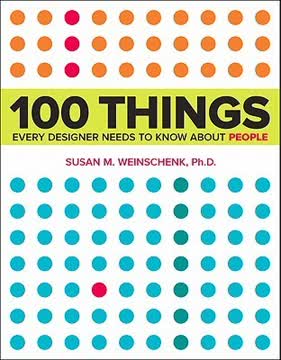
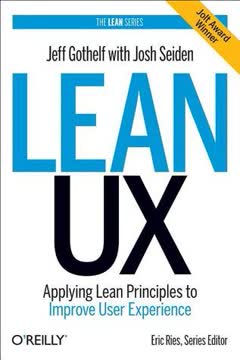
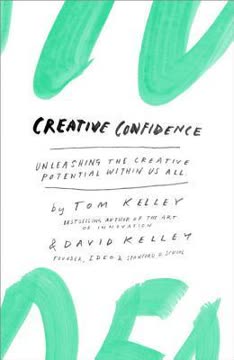
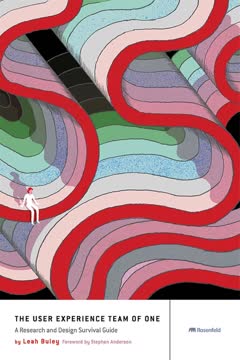
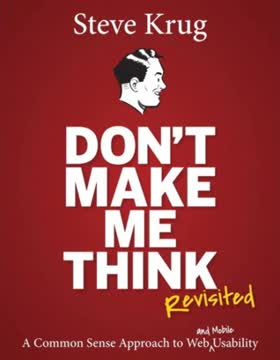
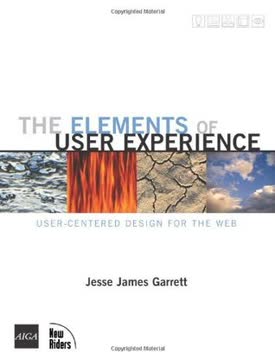
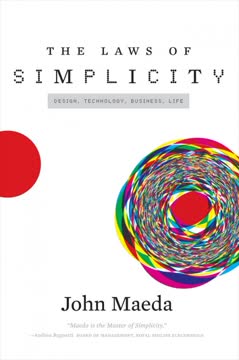
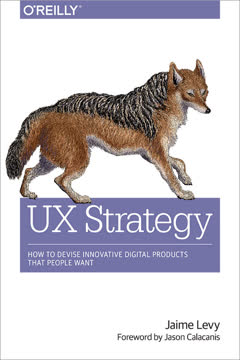
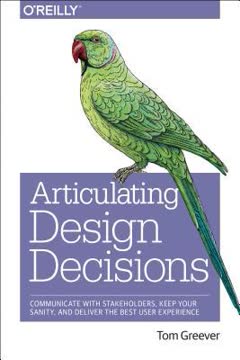
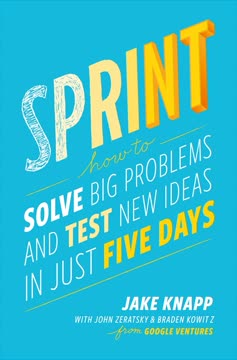
Download PDF
Download EPUB
.epub digital book format is ideal for reading ebooks on phones, tablets, and e-readers.
